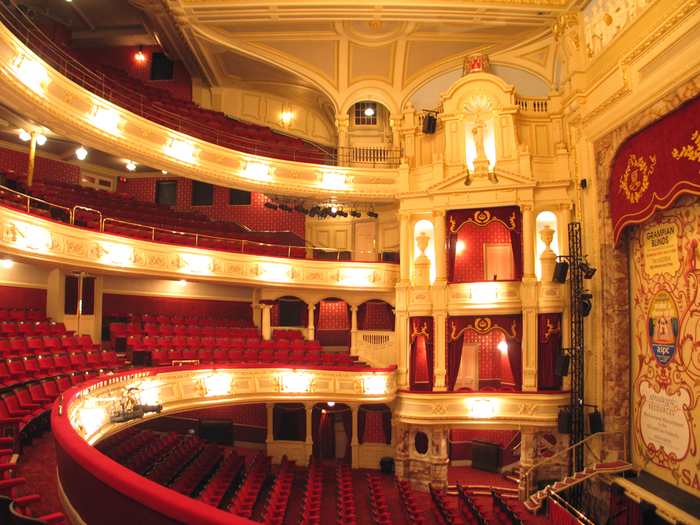The world of theater is covered with mystery, often confusing unexperienced visitors and even frightening them. At the same time, this domain has a set of well-established traditions to be respected. This essay introduces the basic principles of the Western theater. First of all, this includes the organization of the theater space and its interiors. Second, the rules of conduct that apply to all members of the audience are introduced. Third, the importance of the audience in the concept of a theater play is discussed. These principles serve to alleviate some of the tension often experienced by the people who have not yet formed a habit of attending plays at conventional theaters.
As the Western theater tradition originates from earlier periods of history, many buildings possess fascinating facades and interiors. Inside the venue, most theaters are organized in a similar manner, despite the perceived variety. The audience has access to the Front of House, usually starting their visit from the foyer (Theatres Trust, n.d.). Having validated the ticket, visitors gain access to the auditorium, or the house. The auditorium is divided into different sectors of seats, such as the stalls and the balconies (Figure 1). They are organized in an amphitheater shape around the heart of the house – the stage. It is on the stage that the production happens, which may also have a variety of forms: play, ballet, opera, and other types of performances.

Having entered the auditorium, the members of the audience are requested to take their specific seats assigned with the tickets. As per the Western theater traditions, smart attires and evening dresses are welcome, whereas light clothing and shorts is not allowed. In addition to taking only the assigned seats, audience members are discouraged from leaving them outside of designate periods, know as entre-acts. They exist specifically to allow visitors to visit the cafeteria or bathrooms, which is discouraged during the performance. Therefore, it is better to arrive at the venue in advance in order to visit the restrooms. During the production, it is imperative to maintain silence throughout most parts. Audible sounds distract other viewers and performers at once, which is why talking, eating, or using a mobile phone during the play is strictly prohibited.
Evidently, such rules exist to maintain the immersion into the production. In the 21st century, there is a variety of entertainment forms, including movie theaters, that compete with the traditional plays. However, they lack the unique characteristic of a theater, which is the unparalleled connection between the audience and the performers. The key role of the spectators is to enable such a connection that supports the artists. Thus, it is important to be a rightful part of a grateful audience that supports the actors. Once the performance ends, it is an appropriate time to express this gratitude with a round of applause to let all people behind the production know that they did a good job.
Overall, the mystery around the world of theater stems from the comprehensive set of rules and visitor guidelines that prevail in the Western tradition. These regulations are of paramount importance, as they support the immersive aspect of the production. While they concern a variety of criteria, from dress-code to behavior of the audience, the rules are not particularly difficult to maintain. In most cases, a generally decent behavior is enough to avoid troubles at the theater. In exchange, the visitor receives unparalleled emotions that draw from the unique connection between performers on stage and the audience.
Reference
Theatres Trust. (n.d.). What spaces make up a theatre? Web.